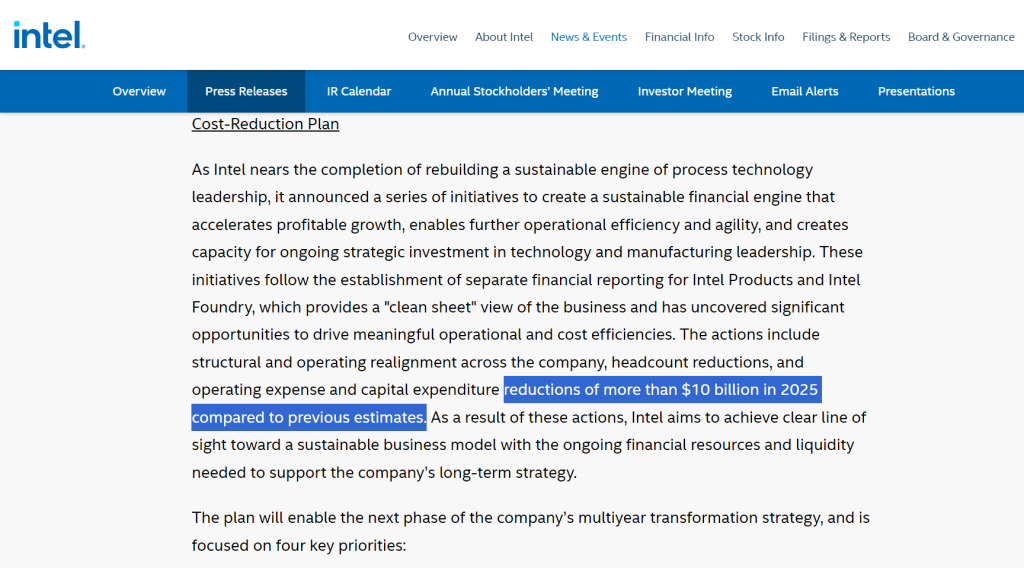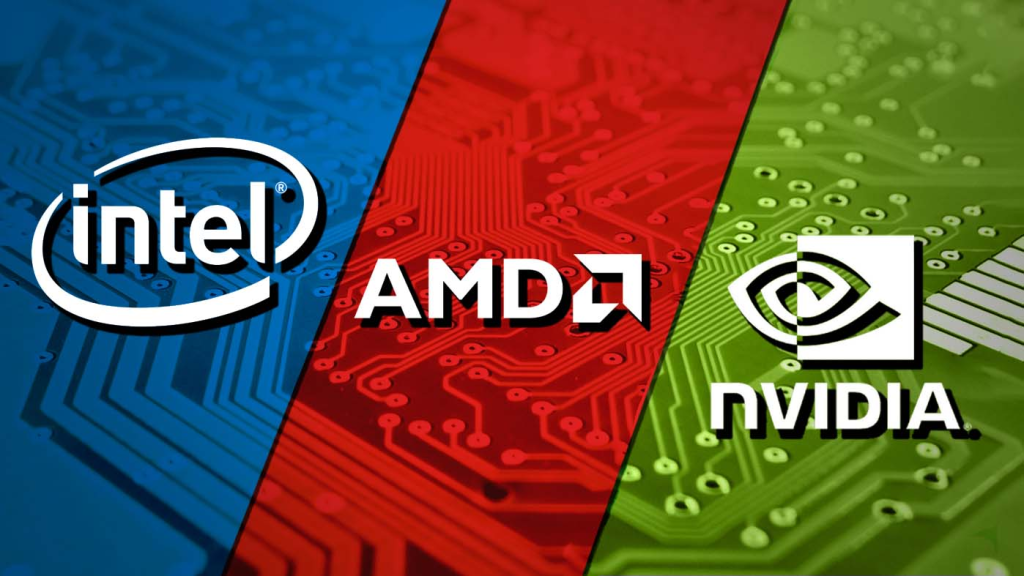Financial Performance and Challenges
In the second quarter of 2024, Intel reported a net loss of $1.6 billion, a stark contrast to the $437 million loss in the previous quarter. This disappointing performance is attributed to various factors, including high operational costs and underwhelming revenue growth. The company’s revenue for Q2 2024 was $12.8 billion, a slight 1% decline year-over-year.
Q2 2024 Financial Highlights
| GAAP | Non-GAAP | ||||||
| Q2 2024 | Q2 2023 | vs. Q2 2023 | Q2 2024 | Q2 2023 | vs. Q2 2023 | ||
| Revenue ($B) | $12.80 | $12.90 | down 1% | ||||
| Gross Margin | 35.40% | 35.80% | down 0.4 ppt | 38.70% | 39.80% | down 1.1 ppts | |
| R&D and MG&A ($B) | $5.60 | $5.50 | up 2% | $4.90 | $4.70 | up 5% | |
| Operating Margin | -15.30% | -7.80% | down 7.5 ppts | 0.20% | 3.50% | down 3.3 ppts | |
| Tax Rate | 17.50% | 280.50% | n/m** | 13.00% | 13.00% | — | |
| Net Income (loss) Attributable to Intel ($B) | -$1.60 | $1.50 | n/m** | $0.10 | $0.50 | down 85% | |
| Earnings (loss) Per Share Attributable to Intel | -$0.38 | $0.35 | n/m** | $0.02 | $0.13 | down 85% | |
**Not meaningful.
Source: Intel Second-Quarter 2024 Financial Reports.
Intel’s CEO, Pat Gelsinger, acknowledged the financial setbacks in a memo to employees, highlighting the need for significant operational changes to align with the company’s new business model. The memo emphasized the necessity of reducing layers of management, eliminating overlapping responsibilities, and discontinuing non-essential projects.
Cost-Cutting Measures

As part of its cost-saving strategy, Intel plans to reduce its research and development (R&D) and marketing expenditures by billions annually through 2026. Capital expenditures will also see a more than 20% reduction this year. Additionally, Intel is suspending its dividend payments starting in the fourth quarter of 2024 to prioritize investments in critical business areas.
Impact on Intel’s Stock and Market Position
The announcement of these layoffs and cost-cutting measures has had a significant impact on Intel’s stock. The stock (stock ticker INTC) experienced a 20% decline in after-hours trading following the announcement, reflecting investor concerns about the company’s financial health and future prospects. This decline adds to Intel’s challenges, making it one of the worst-performing tech stocks in the S&P 500 this year.

Competition and Market Dynamics
Intel has been struggling to keep pace with competitors like Nvidia and AMD, particularly in the rapidly growing AI and advanced computing sectors. While Intel has made strides in AI server chips and other advanced technologies, it remains a minor player compared to its rivals. The company’s dependence on external foundries, such as TSMC, for some of its most advanced chip manufacturing also poses challenges.

Future Outlook and Strategic Initiatives
Despite the current challenges, Intel remains committed to its IDM 2.0 strategy, which focuses on re-establishing its leadership in process technology, expanding manufacturing capacity in the U.S. and EU, and becoming a leading-edge foundry for internal and external customers. Key future products, including the Lunar Lake and Panther Lake processors, are expected to play critical roles in Intel’s recovery and growth.
CEO’s Vision and Employee Impact
In his memo, Gelsinger emphasized the importance of maintaining a culture of honesty, transparency, and respect during this challenging period. He announced that Intel would offer enhanced retirement packages and voluntary layoff options to minimize the impact on employees. The company aims to complete the majority of the layoffs by the end of 2024.
“Our Q2 financial performance was disappointing, even as we hit key product and process technology milestones. Second-half trends are more challenging than we previously expected, and we are leveraging our new operating model to take decisive actions that will improve operating and capital efficiencies while accelerating our IDM 2.0 transformation,”
“These actions, combined with the launch of Intel 18A next year to regain process technology leadership, will strengthen our position in the market, improve our profitability and create shareholder value.”
Pat Gelsinger, Intel CEO.
Intel’s decision to lay off 15,000 employees and implement extensive cost-cutting measures marks a pivotal moment in the company’s history. While these changes are driven by the need to address financial challenges and enhance operational efficiency, they also underscore the competitive pressures Intel faces in the semiconductor industry. As the company navigates these turbulent times, its strategic focus on innovation and technological leadership will be crucial for its long-term success.
For more details about Intel’s Q2 2024 financial results, you can read the full press release here.


